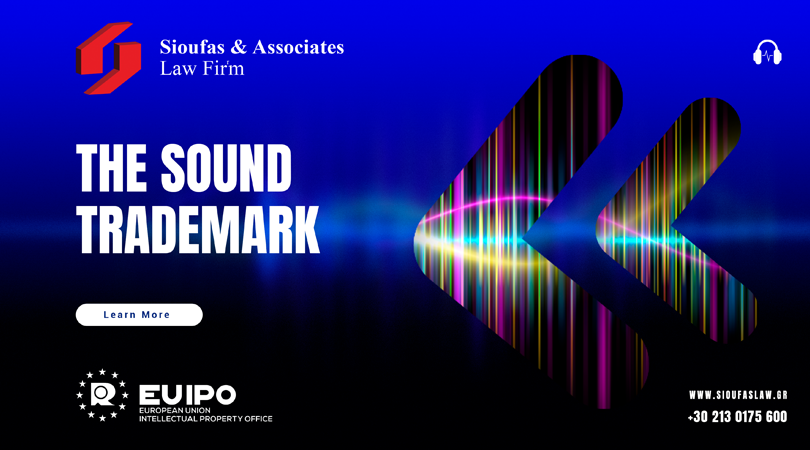The Sound Trademark

According to article 4 of EUTMR an EU trademark may consist of any sign provided that such signs are capable of being represented on the Register of European Union trade marks (‘the Register’), in a manner which enables the competent authorities and the public to determine the clear and precise subject matter of the protection afforded to its proprietor.
Also article 3(3)g of EUTMIR defines a sound mark as a trademark consisting exclusively of a sound or a combination of sounds.
Combination of sounds with movement of images are not sound marks but multimedia marks as per article 3(3) (i) of EUTMIR.
The applicant must attach an audio file reproducing the sound or an accurate representation of the sound in musical notation. Such file must be in MP3 format with a maximum limit of two megabytes and such sound must not stream or loop. Notations must be filed in single JPEG file or on one single A4 sheet. For the notation to be precise, the representation must have all the elements for interpreting the melody i.e. pitch, tempo, lyrics etc. Audio files and musical notations cannot be filled in parallel and one has to choose which of the two it wishes to retain.
Other means of representation, such as onomatopoeia, musical notes alone and sonograms will not be accepted as representations of sound marks. This is because the clear and precise subject matter of the protection cannot be discerned this way. The Office must be able to determine the pitch and duration of the sounds forming the melody for which registration is sought (27/11/2003, C-283/01, Musical Notation EU:C:641, par.61).
Like in other types of marks, the sound mark will be accepted depending on whether the sound is distinctive per se, that is the average consumer will perceive the sound as memorable one that serves to indicate that the goods or services are exclusively associated with one undertaking.
More importantly, while the public is accustomed to perceiving word or figurative marks instantly as signs identifying the commercial origin of the goods, the same is not necessarily true where the sign is merely a sound. Only a sound that departs significantly from the norm or customs of the sector and thereby fulfils its essential function of indicating origin is not devoid of distinctive character per article 7(1)(b) (24/5/2012, C-98/11 P,Hase, EU:C:2012:307, par.42.)
The kind of marks that are unlikely to be accepted without evidence of factual distinctiveness include:
- a. very simple pieces of music of only one or two notes (T-408/15, EU:T:2016,468).
- b. Sounds in the common domain (i.e. national anthem ).
- c. Sounds too long to serve as an indication of origin.
- d. Sounds typically linked to specific goods and services (i.e. machine generated blip commonly emitted by computers).
However note that even too short marks can be perceived as memorable and trigger a reminder effect and as a result be perceived as an indication of origin (Cases 19/9/2019, R 620/2019-4-1 and 16/12/2013, R 2056/2013-4, Case R-2821/2019-1).
Marios D. Sioufas
Deputy Managing Partner
LL.M. in Intellectual Property Law – Queen Mary University of London
Σιούφας & Συνεργάτες | Γιώργος Σιούφας | Μάριος Σιούφας
Για να αποθηκεύσετε το άρθρο σε μορφή Pdf:
For More Info
Contact the secretariat of the Legal Services Directorate at telephone: 213 017 5600, or send an email to info@sioufaslaw.gr and we will contact you immediately.





